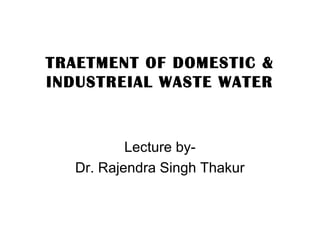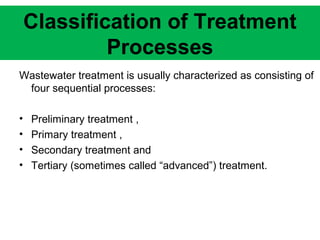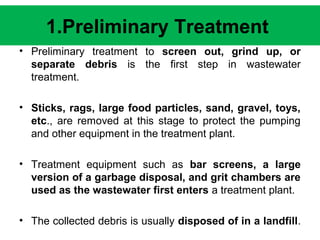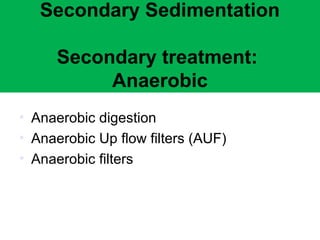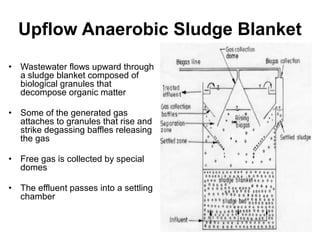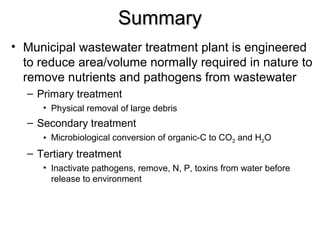Wastewater treatment involves four main processes: preliminary treatment to remove large debris; primary treatment to allow solids to settle; secondary biological treatment using microorganisms to break down organic matter; and sometimes tertiary treatment for advanced removal of nutrients or contaminants. Preliminary treatment uses bar screens and grit chambers. Primary treatment uses sedimentation tanks to separate solids from liquid. Secondary treatment uses either fixed film systems like trickling filters or suspended growth systems like activated sludge.
